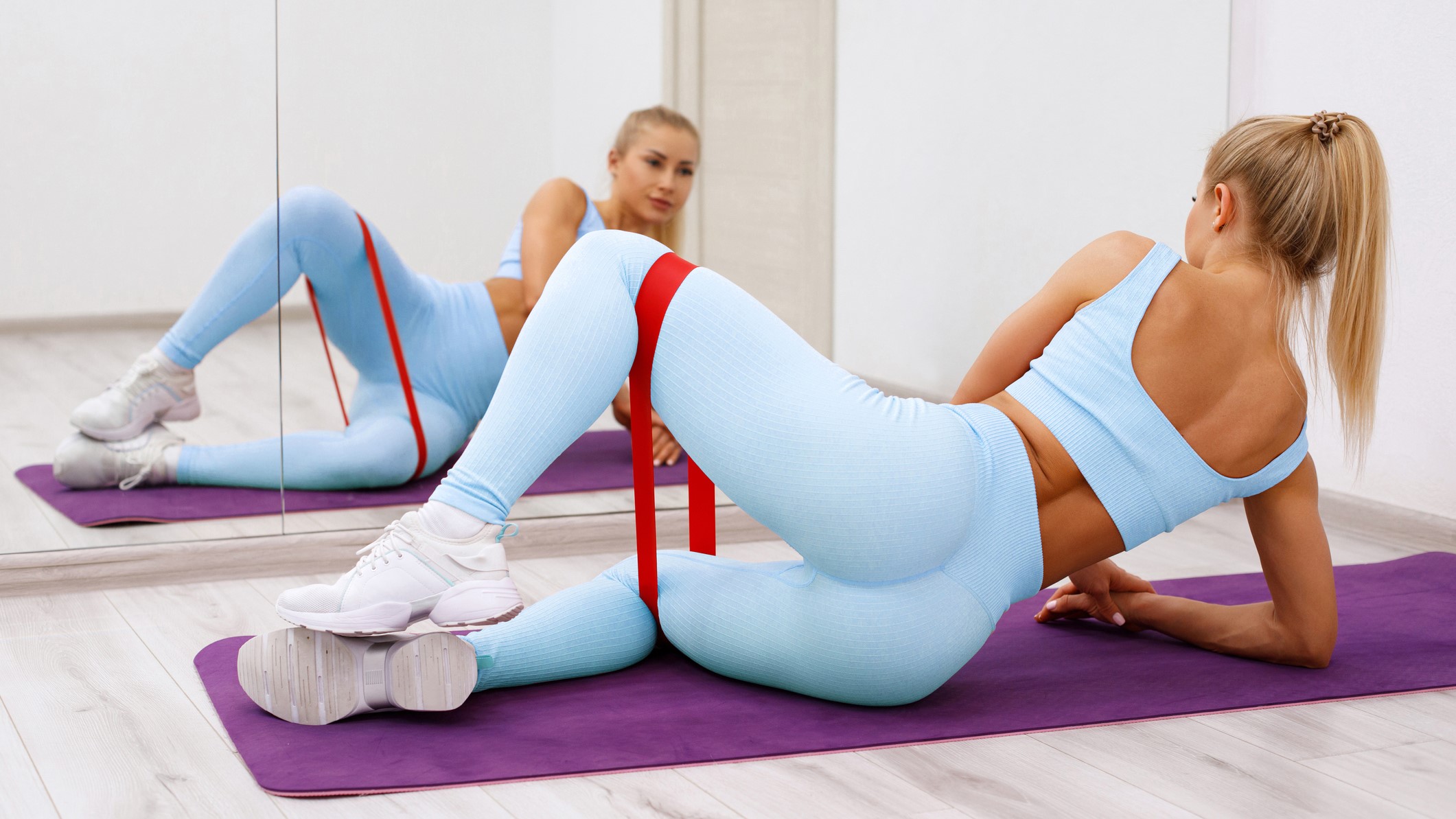
Whether you try banded clamshells or stick to using your body weight, the lower body exercise helps strengthen your glutes, hips, adductors and lower back without lifting heavy weights.
As part of our best resistance bands round-up, we offer advice about choosing the perfect activation band. This small band typically loops above the knees or ankles to increase resistance during lower body exercises. For clamshells, opt for a band that offers medium-heavy resistance without compromising your ability to perform the exercise.
But to help you ease into this mobility-boosting exercise, I cover how to do clamshells with proper form, the benefits, ways to progress or regress the exercise, and how to program the move to suit your leg day programs.
How to do the clamshell exercise
Wrap a band above your knees, then follow the instructions below:
- Lie on your left side with your feet, legs and hips stacked
- Bend your knees to 45 degrees
- Rest on your elbow and gently brace your stomach to engage your core
- Keep the inner sides of your feet pressed together, then lift your upper knee, opening your hip as far as possible. Keep your chest facing forward
- Pause at your end range of movement, then slowly lower your knee to the starting position
- Complete reps, then switch sides
- To progress the exercise, add pulses as you reach your end range of motion
- To make the exercise easier, use a lighter band, start with your body weight, or reduce sets or reps
What are the benefits of the clamshell exercise?
There’s no end to what you can do with the glute exercise.
Clamshells are often included as a pre-fatigue or activation exercise for leg workouts or glute-focused sessions, and can also be used effectively as a glute finisher.
Alternatively, I’ve seen the move crop up during Pilates sessions using a Pilates ring to adduct the hip (pressing the knees together to engage the inner thighs), so it’s used pretty universally as a hip, thigh and glute exercise.
The banded clamshell exercise uses hip abduction to target the outer gluteal muscles called the gluteus medius, the hips and adductors (inner thighs) and gently engages your core. Using your body weight can increase the range of motion around the pelvis while adding the band helps engage the glutes more.
Clamshells are also programmed by physical therapists to ease symptoms of sciatica, strengthening and stretching the muscles that surround and support the spine while increasing range of motion. And, as one of our writers found when they did resistance band clamshells every day for a week, it's an effective exercise.
Abduction is crucial to the movement, so I recommend slowing the exercise down to control both phases of the movement as you lift and lower the knee. Unlike crab walks (walking from side to side with a band looped above your knees or ankles), this exercise works unilaterally, helping you to isolate and hone in on one side of the body at a time.
To get more back from your clamshells, pause at the top of the motion at peak abduction, maintaining tension in the gluteal muscles and increasing the length of your working sets.
How to program clamshells during lower body workouts
I use clamshells to help engage the glutes before leg-focused programs. I also strongly recommend glute activation exercises if you have "lazy" glutes or struggle to activate them properly while you exercise — this is especially common amongst quad-dominant runners.
The exercise does well as part of mobility routines, warm-ups and finishers; a light resistance band can help increase activation while a thicker band should fatigue the glutes and hips post-session.
For inspiration, Bret Contreras (creator of the hip thrust) put together a short glute circuit to help fire up this large and powerful muscle group. You could start with 2-4 sets of 6-10 reps per leg or adopt a circuit-style format such as 45 seconds of work and 15 seconds of rest, adding a mix of exercises.
If working to failure is the goal, add a 5-minute finisher or drop sets to the end of your leg day workout. Dropsets extend an exercise beyond your working sets, typically by dropping the weight, completing reps to fatigue, then dropping weight again (and so on). Using a band, you can decrease the resistance or just add one fatigue set per leg to the end of a workout, completing reps to failure.







